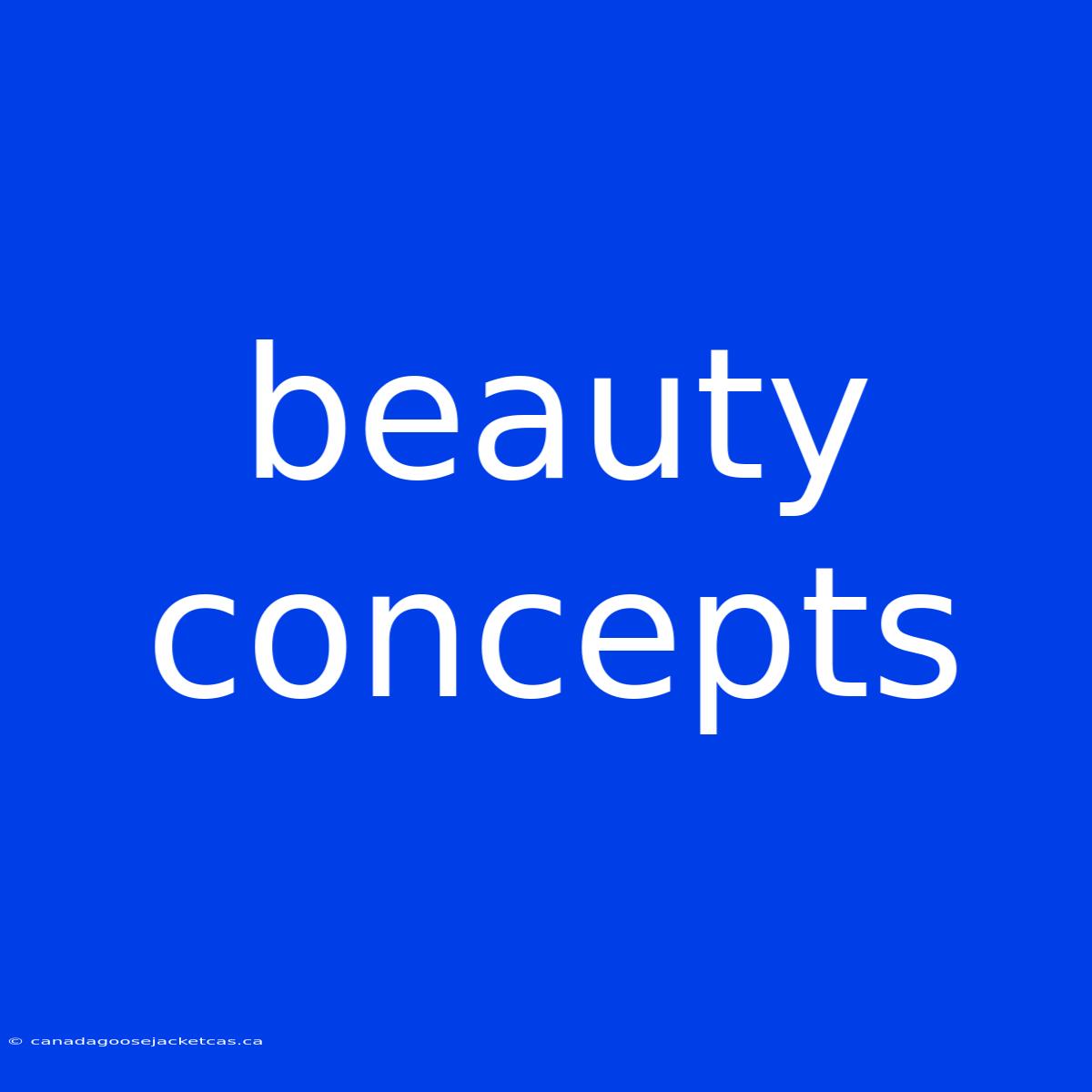Beauty Concepts: Unveiling the Shifting Sands of Perception
What are Beauty Concepts and Why Should You Care? Beauty concepts are the ever-evolving ideas and beliefs that shape how we perceive and define beauty. They are a reflection of cultural norms, societal values, and individual experiences, constantly shifting and adapting to new influences. Editor Note: Beauty Concepts is a subject that has been explored for centuries, but its relevance has never been greater. Understanding beauty concepts can empower you to navigate the world of aesthetics with greater awareness and clarity.
Why this is Important: Beauty concepts are more than just fleeting trends – they influence our self-image, impact our choices, and even shape industries like fashion, makeup, and cosmetic surgery. Delving into the world of beauty concepts helps us understand how these perceptions are constructed, challenged, and ultimately, redefined.
Our Approach: This article dives deep into the evolving nature of beauty concepts, exploring various dimensions and key aspects that influence their development and influence. We have analyzed research from diverse fields like sociology, psychology, and anthropology to offer a comprehensive understanding of this complex topic.
Key Takeaways of Beauty Concepts:
| Aspect | Description |
|---|---|
| Historical Evolution | Tracing the evolution of beauty standards across different cultures and eras. |
| Cultural Influence | Examining how cultural norms and values shape beauty ideals. |
| Media Impact | Analyzing how media platforms portray and influence beauty perceptions. |
| Individuality and Subjectivity | Understanding the role of personal experiences and preferences in shaping beauty ideals. |
| Social Construction of Beauty | Deconstructing the societal processes that contribute to the construction of beauty concepts. |
| Diversity and Inclusivity | Exploring the growing movement towards broader definitions of beauty that embrace diversity. |
The Shifting Sands of Beauty: Key Aspects
Historical Evolution: Beauty concepts have a rich and varied history, evolving alongside cultural and societal shifts. In ancient Egypt, elaborate hairstyles and cosmetics were used to express power and status. The Renaissance celebrated a more idealized and symmetrical beauty, while the Victorian era embraced delicate features and a pale complexion. Understanding this historical evolution helps us appreciate the dynamism and contextuality of beauty concepts.
Cultural Influence: Different cultures have developed unique beauty standards. In many Asian cultures, fair skin is often associated with beauty and purity. In Africa, diverse skin tones and features are celebrated as markers of cultural heritage. The influence of cultural norms on beauty concepts is undeniable, shaping everything from fashion choices to cosmetic practices.
Media Impact: The media plays a powerful role in shaping beauty perceptions. Magazines, television shows, and social media platforms often present idealized and unattainable images of beauty. This can contribute to negative body image and unrealistic expectations, leading individuals to feel pressured to conform to these narrow ideals.
Individuality and Subjectivity: While societal influences play a significant role, beauty is ultimately subjective. Personal experiences, preferences, and values contribute to individual interpretations of beauty. What one person finds attractive may not appeal to another, and this diversity of perspectives is essential for fostering a more inclusive understanding of beauty.
Social Construction of Beauty: Beauty concepts are not innate, but rather socially constructed. Through processes like socialization, media exposure, and peer influence, individuals internalize societal expectations about what is considered beautiful. Recognizing the socially constructed nature of beauty allows us to question and challenge these norms, promoting greater self-acceptance and inclusivity.
Diversity and Inclusivity: The modern beauty landscape is increasingly embracing diversity. A rising movement towards inclusivity challenges traditional beauty standards and promotes acceptance of all body types, skin tones, and ethnicities. This shift reflects a growing awareness of the importance of representation and the need for more inclusive beauty ideals.
Conclusion: Embracing the Diversity of Beauty
Understanding beauty concepts is crucial for navigating the complexities of the modern world. By acknowledging the historical evolution, cultural influences, media impact, and the role of individuality, we can challenge narrow definitions of beauty and embrace a more inclusive and diverse understanding of aesthetics. This shift towards greater self-acceptance and inclusivity is essential for fostering a more positive and empowering environment for all.

